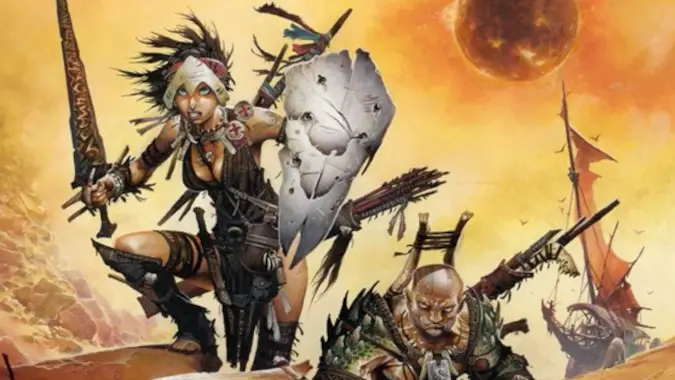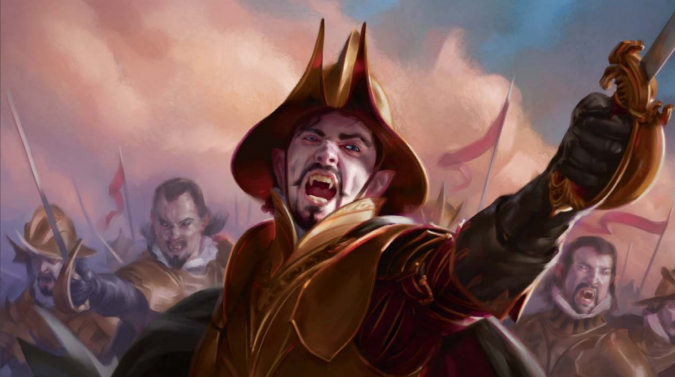Why DMs should start small when building out new campaigns and settings

When you’re planning to write your own unique Dungeons & Dragons campaign rather than a pre-made, fully-realized campaign — also referred to as homebrew — it can be incredibly fun to go hog wild on the worldbuilding. I know this because I do this. I often have entire continents and the political breakdown for each all planned out before I even start figuring out where play is going to start. It can be crazy fun to do this, but one thing to keep in mind is, your players are likely not going to start out hobnobbing with Queens and High Priestesses. It’s worthwhile to really think about how the game will look and feel to them at level 1 before you start worrying about the Emperor of the Pallid Wastes.
I mean, do worry about that guy, he’s trouble. But you don’t need to sit down and come up with every detail about him first up, not when there’s a Rat King to deal with first for a party of level 1 adventurers. So here are some tips and tricks for you when starting your own homebrew game.

It doesn’t have to start in a tavern
The first setting is a great place to start getting creative. When starting a D&D campaign, it’s great if you have a sprawling world to play in, but sometimes you’re better off starting small and detailing the people and places the party will actually see before worrying about the ones you hope to get to eventually. That plucky Halfling lady who runs the local blacksmith’s is a more immediate — and more useful — character when you start out than any of the Army of the Horned God you’re planning for when they lit level 10. You can’t get there if you don’t make it past level 1, so it’s worth thinking about that starting point, even if it doesn’t quite tie into the bigger arc of the campaign.
For example, my current plan for my next campaign is a small but growing town on the banks of a great river that’s been using water mill power to create all sorts of goods that they trade downriver for supplies and other things they can’t get. Unfortunately, using the water mills so extensively has upset the elemental spirts of water and earth and caused all sorts of problems — disturbed animals, humanoid incursions from Goblins and Kobolds, and increased bandit activity to name a few. So the Burgomaster of the town is looking for adventurers to hire on, specifically to take care of these problems. It’s a solid, basic start for a campaign, and it gives me all kinds of room to expand without spending more time worrying about that expansion in the future than I do spend right now making sure we get there.
My last campaign, I dropped my players in an active volcano lair on a lost island full of weird ruins and bizarre enclaves of unfriendly people. Getting out of there was their highest priority. You could start your campaign on the back of a flying sky-whale bigger than Manhattan populated by the descendants of a powerful air-exploring people who know nothing about the world below them, let them have adventures on its back, and only discover the world below when some danger from it forces them to head down and explore. It’s worth building adventure hooks for the future, but rooting them in the problems and people of that initial starting point.

Details make the game
Figure out first where you’re starting out and what kind of games you’re planning for the first few sessions. Remember, if you’re starting at level 1? Combat can be deadly, and if you’re not the kind of DM who makes allowances to keep the players alive — I am, and I see nothing wrong with that because dying at level 1 in a basement just does not fit the heroic fantasy ideal for me — then you’ll need to make it as easy as possible for new characters to join the party, and that means being in a situation where that can occur.
It’s worthwhile to focus entirely on the places the party will actually see for the first few sessions. I personally like to have a smallish town or village, at least one area of wilderness, and a couple of mini-dungeons as well as a bigger, more comprehensive dungeon for the players to explore. Note that in this case, dungeon doesn’t literally have to be a hole in the ground full of monsters. It just means any place you sketch out and populate for play — you could create a local thieves’ den packed with NPCs that could end up as allies if your party plays it a certain way and all the encounters end up as RP moments. It just means you have things in store for your players.
Likewise, it’s very much worthwhile to come up with friendly NPCs for the players to interact with. Some pretty stock ones are the various shopkeepers they’re going to need to sell loot to, the various healers and of course the people who might throw some work their way — town leaders, influential people, community standouts. Thinking out where the players can go for work, advice, and supplies and being ready to roleplay those characters in the early days of the game is often much more important than knowing what’s going on with the ancient evil slumbering far to the west. If they don’t get past level 1, they’ll never get to see that thing anyway.
Please consider supporting our Patreon!
Join the Discussion
Blizzard Watch is a safe space for all readers. By leaving comments on this site you agree to follow our commenting and community guidelines.
 @MatthewWRossi
@MatthewWRossi




